Ashton is Stranger Than Fiction - The Northern Jerusalem
Welcome to the first of our blogs under the title of Ashton is stranger than fiction, we hope you enjoy the strange history of this once king of the industrial revolution. If you are aware of stranger subjects to cover in these Blogs on Ashton’s past, please let us know and we will try to cover it in a future piece.
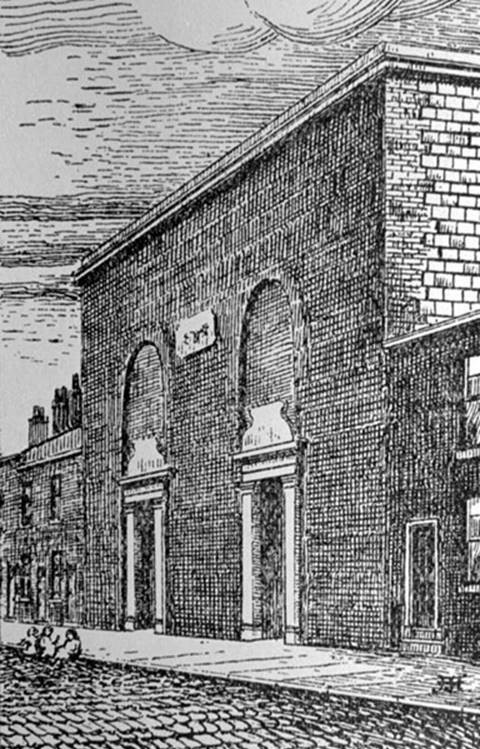 The present town centre is the modern face of the town, previously the focus for businesses was Stamford Street and if you look closely at your surroundings you will see that some back-street buildings look out of place. Church St Ashton is probably one of the best examples of this as in days gone by this was the main thoroughfare which would have lead you to the central railway station, and once in its history a replica of Solomon’s Temple. This temple was built at great expense on Church Street, its cost on completion in 1825 was £9500; over £5000 more than the Town Hall built a full 15 years later. The temple known as a The Sanctuary was built by local businessmen to house The Church of the Christian Israelites; the impressive building’s interior was illuminated by two large glass domes on the roof. Its leader was the controversial man, John Wroe and his teachings are still followed by some today in Australia and The United States.
The present town centre is the modern face of the town, previously the focus for businesses was Stamford Street and if you look closely at your surroundings you will see that some back-street buildings look out of place. Church St Ashton is probably one of the best examples of this as in days gone by this was the main thoroughfare which would have lead you to the central railway station, and once in its history a replica of Solomon’s Temple. This temple was built at great expense on Church Street, its cost on completion in 1825 was £9500; over £5000 more than the Town Hall built a full 15 years later. The temple known as a The Sanctuary was built by local businessmen to house The Church of the Christian Israelites; the impressive building’s interior was illuminated by two large glass domes on the roof. Its leader was the controversial man, John Wroe and his teachings are still followed by some today in Australia and The United States.
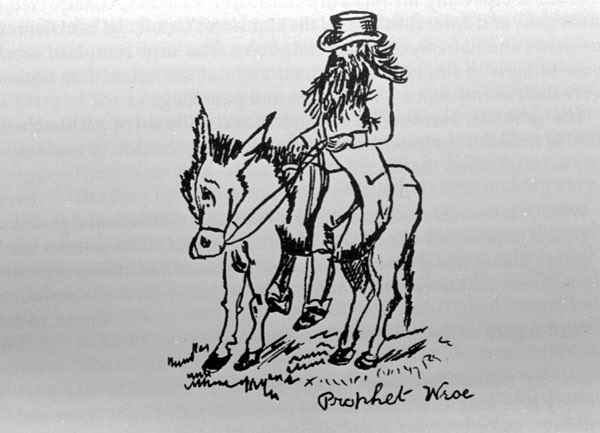 The story behind this windowless great temple of red brick started with the birth of the founder of the Church of the Christian Israelites in 1782. John Wroe was born in East Bowling just outside Bradford which then was part of the largest County in England, Yorkshire. Mr Wroe’s early life was unremarkable, he became a farmer, married and fathered seven children. This all changed in 1819 when he became ill with a fever and following this claimed to have visions and messages from God. In these visions, John Wroe was apparently told to relinquish his normal life to become God’s messenger on earth; a Prophet to preach and spread the word. John Wroe persuaded many people to follow him and his non-conformist teachings and in 1822 he arrived in Ashton under Lyne.
The story behind this windowless great temple of red brick started with the birth of the founder of the Church of the Christian Israelites in 1782. John Wroe was born in East Bowling just outside Bradford which then was part of the largest County in England, Yorkshire. Mr Wroe’s early life was unremarkable, he became a farmer, married and fathered seven children. This all changed in 1819 when he became ill with a fever and following this claimed to have visions and messages from God. In these visions, John Wroe was apparently told to relinquish his normal life to become God’s messenger on earth; a Prophet to preach and spread the word. John Wroe persuaded many people to follow him and his non-conformist teachings and in 1822 he arrived in Ashton under Lyne.
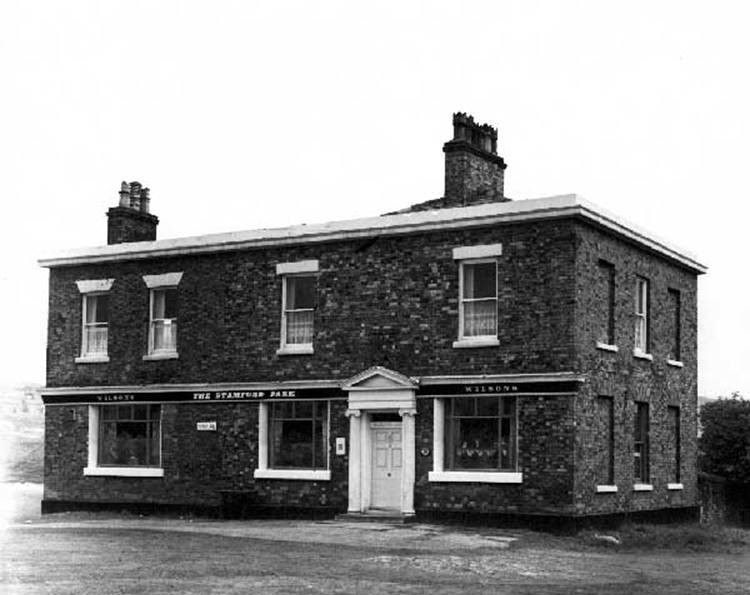 By all accounts John Wroe was a charismatic man and persuaded many of the wealthy residents of this community to follow him; declaring that Ashton under Lyne was, in fact, a Holy City and the New Jerusalem. Even persuading people that at the time of the apocalypse that Ashton under Lyne would be the place where the 144,000 elect would gather.
By all accounts John Wroe was a charismatic man and persuaded many of the wealthy residents of this community to follow him; declaring that Ashton under Lyne was, in fact, a Holy City and the New Jerusalem. Even persuading people that at the time of the apocalypse that Ashton under Lyne would be the place where the 144,000 elect would gather.
John Wroe also believed that the descendants of ten of the Tribes of Israel could be found in England. At its height in Ashton under Lyne, the Church of the Christian Israelites had 500 followers with the Temple being built in the centre of Ashton followed by the four gates; which were to be connected by a wall to create a walled city and a replica of Jerusalem. One of these gates still stands in Stamford Square and was previously known as the Odd Whim Public House.
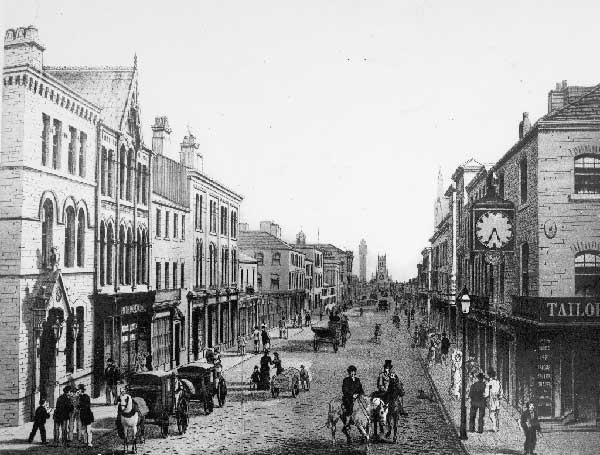 The temple and three of Ashton’s gates were demolished as the town grew and prospered during the industrial revolution. John Wroe’s influence on the leading lights in Ashton under Lyne lasted until 1831, this non-conformist sect held religious parades through the streets of the town dressed in white robes. The Church of the Christian Israelites was not a church that welcomed the poor, its congregation was made up of the well to do of the local community. This like many non-conformist churches at the time was frowned upon by the established Parish Church of Ashton under Lyne; despite this John Wroe actively lead this congregation for 9 years.
The temple and three of Ashton’s gates were demolished as the town grew and prospered during the industrial revolution. John Wroe’s influence on the leading lights in Ashton under Lyne lasted until 1831, this non-conformist sect held religious parades through the streets of the town dressed in white robes. The Church of the Christian Israelites was not a church that welcomed the poor, its congregation was made up of the well to do of the local community. This like many non-conformist churches at the time was frowned upon by the established Parish Church of Ashton under Lyne; despite this John Wroe actively lead this congregation for 9 years.
The demise of John Wroe’s influence began in 1830 when he apparently demanded that some of the leading families provide 9 virgins to accompany him on his quest to convert more followers. This was in addition to the Pillar fronted mansion built for him by his benefactors, which apparently stood close to Portland Basin and overlooked the River Tame. The legend of John Wroe reports that two of the virgins fell pregnant and this caused great scandal within the Ashton community; these young ladies were from the leading lights of the Ashton community. This eventually lead to John Wroe being put on trial and at this point he fled Ashton under Lyne, returning to his native Bradford.
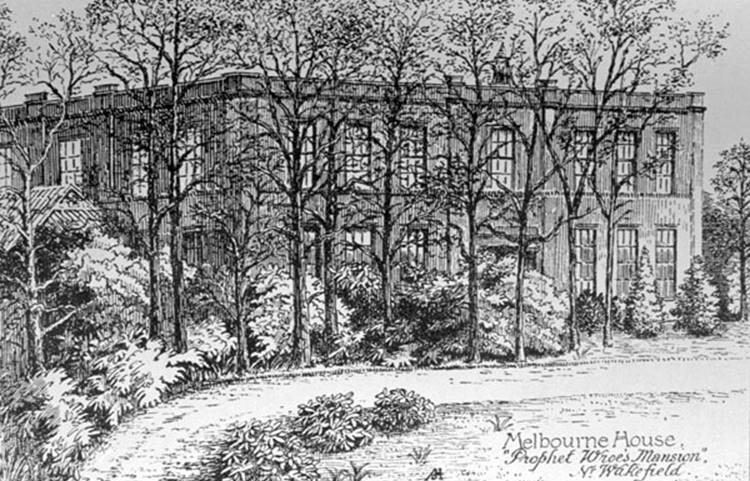 His followers still financing him provided him with a Loan to publish the teachings of his previous mentor Johanna Southcott, this money financed the building of a mansion for his family. Melbourne House still stands today and is a tribute to the influence that the charismatic John Wroe had on his followers considering their status and wealth. Here in Ashton under Lyne his followers numbered community leaders like Samuel Swire, John Stanley and Henry Lees; some still followed the teachings of John Wroe to their life’s end.
His followers still financing him provided him with a Loan to publish the teachings of his previous mentor Johanna Southcott, this money financed the building of a mansion for his family. Melbourne House still stands today and is a tribute to the influence that the charismatic John Wroe had on his followers considering their status and wealth. Here in Ashton under Lyne his followers numbered community leaders like Samuel Swire, John Stanley and Henry Lees; some still followed the teachings of John Wroe to their life’s end.
Although John Wroe’s influence began to wane after 1831 in the Ashton under Lyne community; twenty years later in the census of 1851 over a hundred people still listed themselves as Christian Israelites. A leading member of the John Stanley family was married in the Christian Israelites Sanctuary as late as 1847, whether these people still had contact with John Wroe following 1831 is not known; but I am certain that this can be assumed to be true. John Wroe died in 1863 in Australia and his mansion in Wakefield passed to his sons and not to the Church he had lead. It is said that his followers placed one of John Wroe’s shirts to dry in front of the fire at Melbourne House, the shirt apparently burst into flames. His followers believed that this was due to him requiring the shirt in the afterlife and a testament to their absolute devotion to their Prophet.
If you have any feedback on this or any other subject, please contact us; we look forward to hearing from you.

 Register today for access to our extensive product range
Register today for access to our extensive product range 
